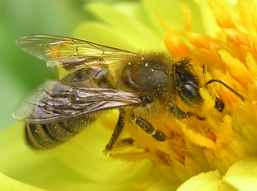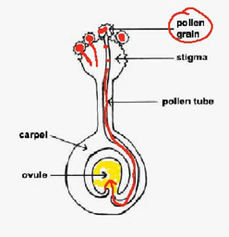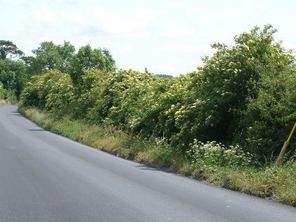|
This week's edition of Leena's Life Sciences Limelight, a column dedicated to research presentations in the life sciences on our campus, focuses on a September 19, 2013 presentation delivered by Dr. Claire Kremen, a Professor in the Department of Environmental Science, Policy and Management at the University of California, Berkeley, during an EEB Department Seminar.  Pollinating honeybee, taken from organicconnectmag.com. Pollinating honeybee, taken from organicconnectmag.com. In her presentation, “Restoring Pollinator Communities and Services in Working Landscapes” (September 19, 2013), Dr. Claire Kremen discussed the creation of a diversified farming system that involves establishing conditions conducive to the production and replenishment of pollination services and which our nation’s farms desperately need. An apologist for promoting cross-scalar vegetation diversity to restore pollinator communities and services, Dr. Kremen argued how cultivating large fields and orchards of single crops purges the breadth of soil, flowers, plants and other vegetation that in turn critically affects the subsistence of various species of native pollinators, such as wild bees. Many fruit and nut crops, Dr. Kremen noted, require pollination for production. Given that American famers bring in millions of non-native honeybees to U.S. agricultural fields every year in order to pollinate crops such as these, Dr. Kremen underscored how cultivators could draw on the pollinating power of native bees, instead of imported honeybees, for pollination of our fruit and nut crops.  Pollen lands on the stigma of a plant where it extends a pollen tube down to the ovules. Pollen lands on the stigma of a plant where it extends a pollen tube down to the ovules. This latent potential of native bees in pollinating our crops confers perhaps all the more relevance, Dr. Kremen explained, when one considers the striking increase in missing honeybee colonies on U.S. farms in recent years. While the precise mechanisms underlying the abrupt honeybee disappearances remain incompletely elucidated, Dr. Kremen noted that these mysterious disappearances do not at all epitomize a new phenomenon in agricultural history. To combat the increasing disappearances of imported honeybees at present, Dr. Kremen proposed that farmers could use the pollination services of native bees and mentioned that historically, we did not need honeybees prior to the 1980s, before which native bees supplied all the pollination services for our farms. Dr. Kremen demonstrated that native bees sometimes actually serve as more effective pollinators relative to honeybees for particular crops. Specifically, Dr. Kremen assessed pollination effectiveness as the proportion of flowers that were visited and that had at least one pollen tube reaching the ovules, and studied this trait in orchards with and without native bees. Dr. Kremen showed that when native bees are present, they are more likely to bring compatible pollen; whereas overall visitation rates are not different between the two types of orchards, Dr. Kremen revealed that fruit set (i.e. the changeover of a static ovary to a rapidly growing young fruit) is actually greater in orchards with native bees present.  Natural hedgerow, taken from www.noticenature.ie. Natural hedgerow, taken from www.noticenature.ie. Since sufficient pollination services can clearly stem from native bees alone, Dr. Kremen asked, “Do we need honeybees given all these potential benefits we can get from native bees?” In response to this question, Dr. Kremen mentioned that to actually maximize native bee pollination, alterations to current farms must occur in order to foster and assist the pollination activities of native bees. Dr. Kremen discussed how we know that nesting sites, for example, and floral resources are distributed both in the farming landscape itself and in the natural habitat. The alterations to current farms that thus must take place include implementing multiple cropping practices and providing adequate nearby natural habitat including pastures, prairies, fallow and wooded areas, and wildflower meadows for the native bees. Based on a global quantitative synthesis of how landscape composition and configuration affects native bees, Dr. Kremen found that hedgerows positively influenced population persistence. Thus the introduction of hedgerows around agricultural fields or within the fields, Dr. Kremen revealed, would especially encourage and support pollination by native bees. Advancing vegetation diversity to reestablish viable pollinator services and diminishing herbicide use, which would lead to more diversity in the landscape, Dr. Kremen showed, unearths some interesting relationships with other ecosystem services. For example, reforming our agricultural system through implementing diversified farming systems everywhere promises to not only enhance pollination activity by native species but also to foster regulation of soil quality and water and nutrient cycles, amongst other crucial ecosystem services, which in turn can help us institute a more productive and sustainable agroecosystem. In the realm of diversified farming systems, Dr. Kremen explained how practices involving multi-cropping, crop rotation, nature reserves, and riparian corridors all work to positively impact pollination. The establishment of a diversified farming system, Dr. Kremen concluded, would not only support the pollination activities of native bees, but in so doing, would also provide an important helper to farms vis-à-vis the cultivation of many agricultural crops in light of growing commercial honeybee disappearances and concomitantly improve ecosystem service sustainability. About the Blogger Leena Shah is a sophomore in the College of Literature, Science and the Arts at the University of Michigan concentrating in International Studies with a focus on Global Environment and Health. Her literary interests include religion, slavery, and the politics of knowledge production.
0 Comments
 By: Nora Dagher It is common knowledge that women are underrepresented in the STEM world. More poignantly, women of color are almost nonexistent in the fields of science, technology, engineering, and medicine. According to a new study by the Institute for Women's Policy Research, women of color –particularly Black women—are being left behind in increasingly important areas as global society ushers in a tech-based future. In 2008, President Obama announced his administration's goal of making the U.S. a world leader in STEM fields. It is clear that Obama's initiatives still have not made an impact, as the institute's report “Accelerating Change for Women Faculty of Color in STEM: Policy, Action, and Collaboration” will speak to. The report states that women faculty of color including Blacks, Hispanics, Native Americans, and those who identify with more than one race, are playing a minimal role in advancing this agenda and are significantly underrepresented in academic STEM-related jobs. The study showed that in 2010 minority women professors constituted 2.1 percent of STEM faculty at four-year colleges and universities in the U.S., though they constituted 13 percent of the U.S. working-age population. White men, on the other hand, held 58 percent of these positions while making up 35 percent of the working age population. White women held 18 percent of STEM positions while making up 36 percent of the working age population and men of color held 18 percent of positions while making up 14 percent of the working age population. 6,400 women of color with STEM doctorates hold assistant, associate or full professorships, compared with 19,800 White women, 20,500 men of color, and 65,100 White men. The data was the result of a meeting in May of 50 experts who sought to understand and find ways to reverse the trend. Hostile work environments, lack of mentorship, challenges to maintain a work life balance and the failure of many departments to adopt a multicultural perspective remain the major hurdles to women of color in STEM fields. Hopefully, more research will continue to shed light on the lack of different perspectives in STEM culture and work toward improving the discipline in the future. 12/10/2013 1 Comment What Happened to the Lions?By Cassi Kirkland The issue of conservation is easy to ignore in a city where the most common animal sighting is a squirrel by the Diag, but it’s a major issue in other parts of the world. Many countries in Africa are battling to keep some of the most majestic animals from going extinct, because they are slowly losing their homes. Although not listed as an official endangered species in the US, the Africa lion population is decreasing. They face habitat loss as a result of an expanding human population, and they are targeted by many hunters for their prized fur. Kevin Richardson is trying to raise awareness for lions and their rapidly decreasing population numbers, and he was featured on GoPro’s HERO3+ Adventure Series this week. In a 15 minute interview, the crew gets amazing video of Kevin interacting with fully grown lions, while he talks about his passion for conservation. Saving precious animals is becoming more and more important as global warming adds to habitat destruction and changes the homes of many of the creatures that inhabit our earth. 12/5/2013 0 Comments Humans: An Invasive Species? By: Cassi Kirkland When we think of invasive species in conservation biology, we often think of animals and plants that take over an ecosystem. Asian Carp are a major invasive species in the Great Lakes, where they outcompete many other fish and grow to large sizes. The same competition occurs in the plant world, where dandelions outcompete other grasses and take over entire fields. If we define an invasive species as one that is introduced to an area and outcompetes other life, does that make humans an invasive species too? As we develop technology and resources, our human population grows exponentially. Using 2010 Census data and recent national population estimates, the global human population is over 7 billion people. The land and consumption habits required to sustain such enormous populations of people are causing extinction rates approaching a mass extinction event. Scientists predict that over half of the world’s terrestrial plants and animals are in danger of becoming extinct by the end of this century. At this point, 50% of the entire Earth’s land surface area has been converted to human use, and we consume over half the world’s freshwater. And this isn’t the first time humans have caused the extinction of a large number of species. Data strongly correlates with the theory that humans caused the extinction of over 33 species of large mammals after they entered North America, and similar extinction patterns occurred all over the world. Is there a way to lessen our negative impact on the world? Can we coexist with the diverse life on Earth, or will we continue to drastically change every ecosystem we inhabit? The way we, and future generations, answer these questions will determine the fate the amazing animal and plant life threatened by our destructive habits. (Picture from: http://thecomicnews.com)  by: Nora Dagher Rosalind Elsie Franklin (25 July 1920 - 16 April 1958), is most definitely a woman you've heard about in your pre-Med/Biology classes! Franklin was a British biophysicist and X-ray crystallographer who dedicated her life to DNA. Through her work, she attempted to understand the fine molecular structures of DNA, RNA, viruses, coal, and graphite. Her best known work is on the X-ray diffraction images of DNA, which, eventually, led to the discovery of the DNA double helix. Scientists Waston and Crick cited Franklin's data as “key” to determining the 1953 model regarding the structure of DNA. However, Franklin's images of X-ray diffraction confirming the helical structure of DNA were shown to Watson without her approval or subsequent knowledge. Watson and Crick received various accolades for their work in determining that DNA has backbones on the outside, all due to Franklin's unpublished papers. In the field of DNA research, Franklin's work often goes unrecognized while Watson and Crick's is widely praised. It wasn't until much later that Franklin received recognition for her contributions to science. After finishing her portion of work on DNA, Franklin led pioneering work on the tobacco mosaic virus and polio virus. She died in 1958 at the age of 37 from ovarian cancer. Photo http://www.google.com/imgres?imgurl=http://upload.wikimedia.org/wikipedia/en/9/97/Rosalind_Franklin.jpg&imgrefurl=http://en.wikipedia.org/wiki/Rosalind_Franklin&h=254&w=198&sz=1&tbnid=WgucNKdTLxBPfM:&tbnh=186&tbnw=144&zoom=1&usg=__Gvim-lWusSVib5aCOscixhEVNSs=&docid=ji142AADnC5r2M&itg=1&sa=X&ei=aTuhUquaOq-02AWKrICwCg&ved=0CIoBEPwdMAo |
WELCOME, UMICH SCIENTISTAS!
CAMPUS PICS
WHAT'S NEWUPCOMING EVENTSPAST POSTS
October 2022
SORT BY TAG |
The Scientista Foundation, Inc. All Rights Reserved © 2011-2021 | Based in NY | [email protected]
The Network for Pre-Professional Women in Science and Engineering
The Scientista Foundation is a registered 501(c)(3) -- Donate!
The Network for Pre-Professional Women in Science and Engineering
The Scientista Foundation is a registered 501(c)(3) -- Donate!


 RSS Feed
RSS Feed